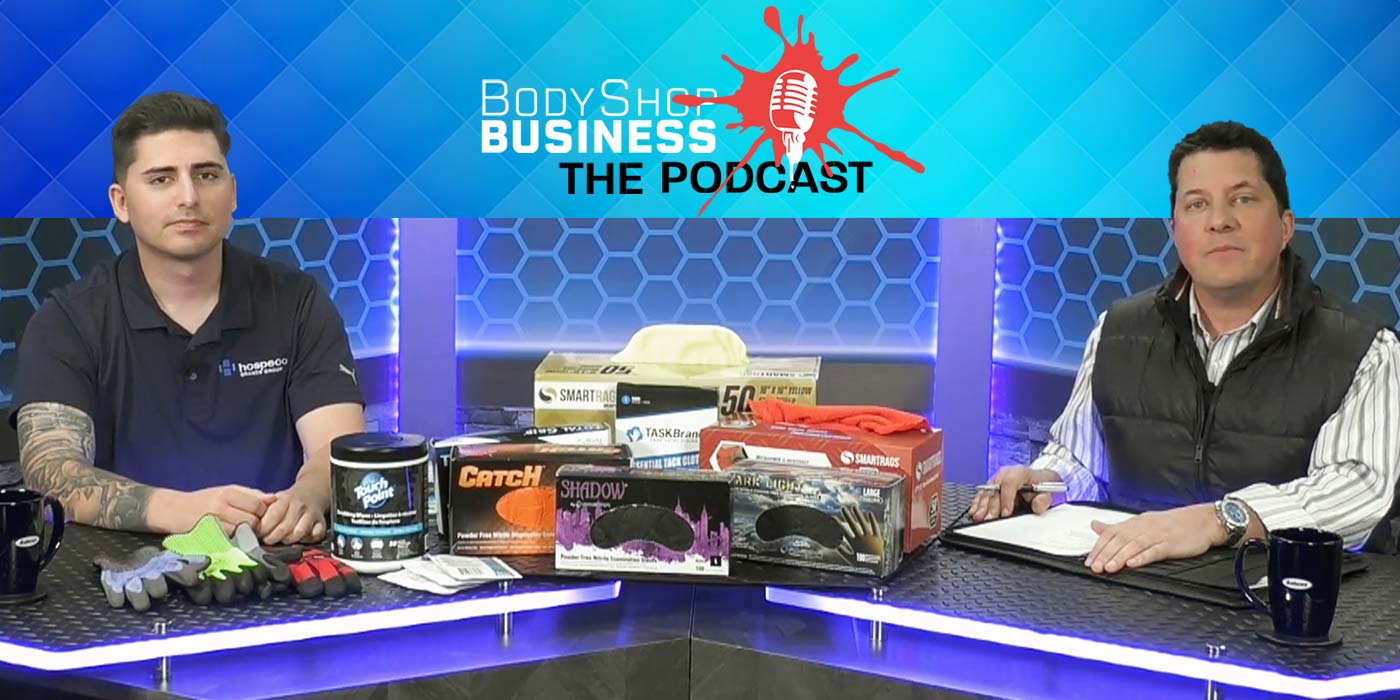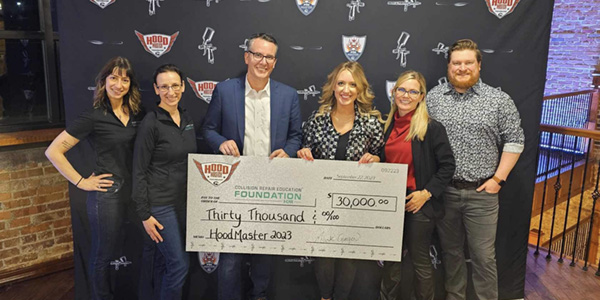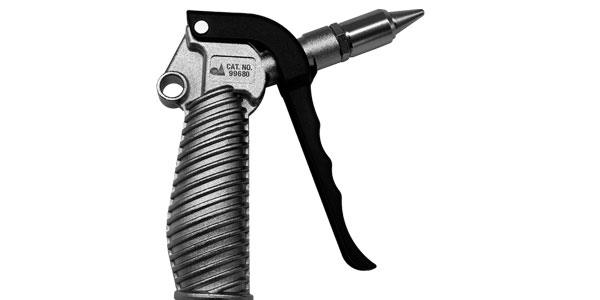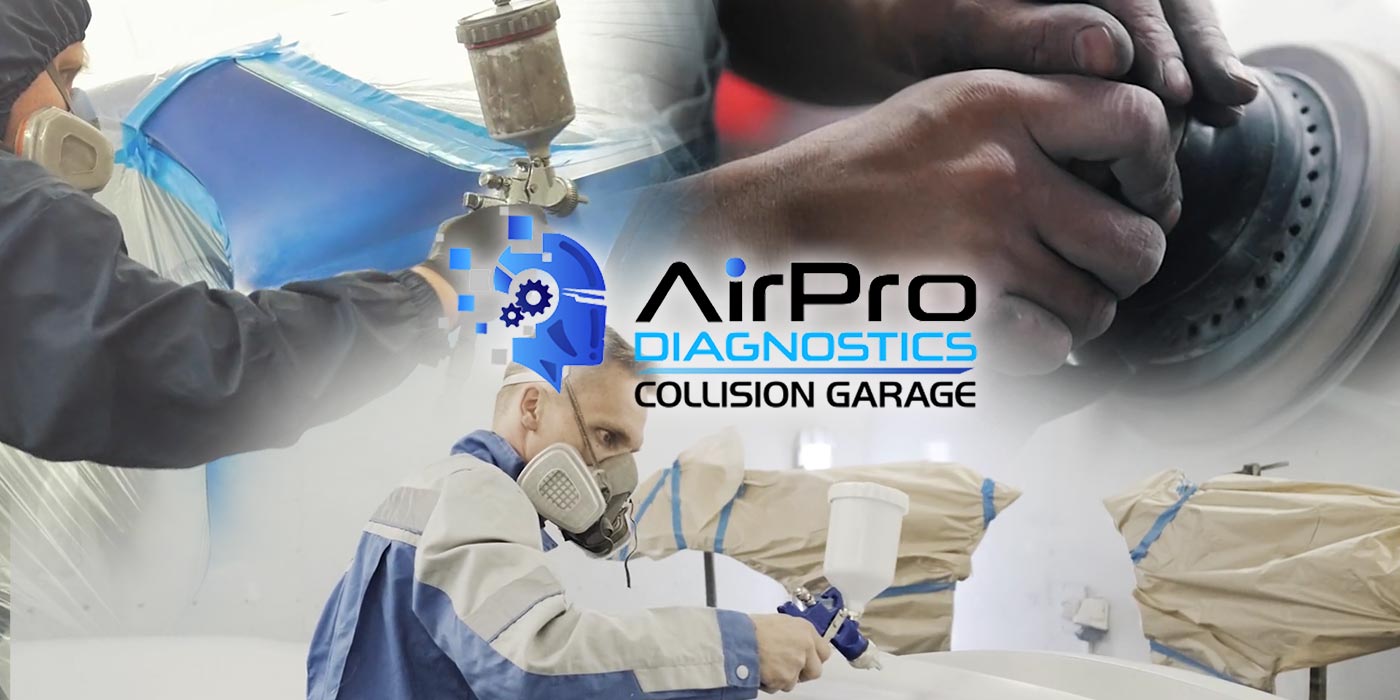In 2002, we were opening a new location and I told my paint manufacturer that I wanted to spray waterborne. Back then, waterborne wasn’t mandated. It was new on the scene, and I always liked to be cutting edge and at the forefront of what the industry was doing. Plus, we painted a lot of high-end European vehicles, and I knew that a lot of them were painted with waterborne at the factory.
Getting Equipped
We opened our new store, went to NACE and consulted with our paint manufacturer to find out what was the best equipment or spraybooth for waterborne.
When you check this equipment out, the salespeople will tell you that all you need is handheld dryers, or all you need are Christmas tree stands with little blowers on them, or all you need is some kind of drying system, whether it be fans or quad units. My personal opinion is that you could spray waterborne in a spraybooth without ever retrofitting it, as long as you have enough air movement. However, I believe that you won’t be able to maximize the performance of the waterborne product unless you consider some type of drying system, and I prefer quads or wall-mounted units in the corners.
When we started out with these wall-mounted units, they were great on just a bumper or a molding or a door. But when I was doing an Audi TT or a Nissan 350Z that had really low rockers, these units weren’t effective. But it was part user error and part faulty installation of these units. Let me explain.
The key to waterborne is flash time and the drying of the basecoat. In all the years I’ve sprayed paint, we’ve had less than five comebacks, maybe from paint peeling off a bumper because we didn’t prep it properly or whatever, and it was always user error. Over the first six months I sprayed waterborne, we had a ton of comebacks because my painters didn’t let the basecoat flash or dry long enough before applying clearcoat. So it was user error and not a matter of faulty equipment or bad product. We tried to spray water like solvent, and you can’t do that.
Still, we found that the wall-mounted units were the best to use because they had variable-drive frequency integrated into our bake cycle. But installation is critical. Make sure that whoever you have install your units knows what they’re doing – which is why sometimes cheaper isn’t always better. When we first had our drying units installed, they weren’t performing properly and we couldn’t figure out why. We called everyone from our paint manufacturer to the people who installed them, and finally an expert came over and discovered that the units had been installed too far from the floor when they were only supposed to be 12 inches from it.
Also, concerning the vacuum and the hoses riding on it, the hoses were backward and thus weren’t giving us enough air movement. You would hold your hand in front of them and barely feel any air at all. Were they blowing out air? Yes, but not correctly. So make sure your installers actually know what they’re doing, and don’t forget to request all of the technical information and read it yourself.
Learning As You Go
You have all these people who say that waterborne will speed up your production, but based on my experience and the information I’ve gathered from consulting with 200 shops a year, I say it’s baloney.
If you’re doing four to five cars a day, you might get one more car a day. If you’re doing 15 cars a day, you’ll probably get one or two more. But if you’re transitioning to waterborne strictly because you think you’ll double your paint load, it’s a bunch of bull.
Does that mean you won’t be more profitable or a little faster? No, you may realize small gains here. But if you’re doing four to six cars a day, you won’t see any difference in production, no more than if you were studying your “takt time” in a lean environment and making sure that a car was in and out of the booth in 70 to 90 minutes.
Between my shop that sprayed waterborne and my other shop at the time that still sprayed solvent, my gross profit for each shop was within 2 to 3 percent of each other. The first year I sprayed waterborne, I made 10 percent less gross profit than I did using solvent due to user error. My painter was used to mixing up a certain amount for solvent and didn’t have to mix up as much for waterborne. So it was a learning curve.
The waterborne toner cans are smaller and more expensive, so premix, water is more expensive than solvent. But savings can be achieved through coverage. Waterborne covers much better than solvent, so if I can cover something in one coat versus two or three with solvent, that’s where I realize savings. But if you have a painter who puts one coat on and gets good coverage but doesn’t like his blend and puts another coat on to achieve better blend, you’ve just lost your cost savings. That’s why it’s important that you don’t mix up as much and equally important how you put your first coat down.
Once we had a year under our belt, my gross profitability came in line and it became the same as it had been when we were spraying solvent. It always amazes me when a shop owner says his gross profitability went up 20 to 30 percent when he changed to waterborne. There’s more to that story. Either they weren’t tracking their cost of goods sold properly on the expense side before, or maybe they got a bunch of toners up front for free or a discount. But in my experience, your gross profitability is going to be within three to four percent of what it was with solvent.
Prep With Caution
Is paint preparation going to be any different? Yes, and it will require a higher degree of skill. Waterborne is thinner than solvent, so you have to pay more attention to the way you sand or prepare your panel. Little, fine scratches that you may have covered up with solvent before will be magnified with waterborne.
If you would have told me before I switched to waterborne that my color match was going to get better, I would have said baloney because my color match was already really good. But when I went to waterborne, it took my color match to a whole new level. Waterborne is a lot clearer and cleaner and not as cloudy as solvent. Ever spray a silver on a Honda or Toyota and it’s a little milky-looking or maybe your side tones or hues are off just a hair? This is not as likely to happen with waterborne as it’s a lot cleaner and more brilliant.
Patience Is Paramount
We didn’t think about personnel issues much when we switched to waterborne. But know this: Solvent will make an average painter look great, but waterborne will separate the men from the boys. Waterborne will separate really good applicators from those who are just using a spray gun. The reason is because waterborne requires a higher-skilled technician, but application is crucial and patience is a virtue the painter must have.
If I’m using ABC paint and it’s solvent-based, and my painter quits or I fire him, I can get a painter off the street who has sprayed solvent before and, within 30 to 60 days, get him to master my brand of solvent with a little technical support. With waterborne, however, every season has difference nuances.
So if I bring a painter off the street who has never sprayed it, he’s going to have to go through every season because temperature and humidity changes will come into play. So it might take a new painter a little longer to get acclimated to your climate or work environment spraying waterborne versus solvent. He’s not going to just come in and boom, get the clearcoat and basecoat and learn the mixing system and ratios, etc.
Also, when you bring someone in off the street who hasn’t sprayed waterborne before, you have to make sure his prep is that much better. He’ll have to go through a learning curve to know how much to mix and understand the coverage so he doesn’t waste paint. But with today’s technology with scales and different things you can do to mix paint, that’s getting much more dialed in and I don’t believe that’s as much of a problem as it was in 2002.
What We Didn’t Know
Here are some things we didn’t know about when we switched to waterborne.
We found that our waterborne hazardous material disposal costs were 40 percent higher than they had been with solvent. With solvent, the thinner could be recycled. But with waterborne, it can’t. So the thinner is hauled off to be burned at plants where they’re melting down tires or asphalt or something, and the cost is higher with waterborne because water has to evaporate. But if you’re using waterborne over solvent, the coverage is better and hopefully you’re only mixing up what you need and not accumulating as much waste.
Another thing we found out had to do with our drums in which we stored our thinner. Our guys would use water to clean their guns and then put the guns in the gun cleaner. If we got water or any thinner in the gun cleaner and then put it into drums for recycling, the bottoms of our drum pumps would rust out and I would end up with a 55-gallon drum of thinner that was contaminated.
We learned that we had to be much more disciplined in the cleaning of our guns and equipment. And we also learned to go with stainless steel pumps versus something that could rust.
Other Considerations
Regarding spray-out cards, if you switch to waterborne, you have to go from cardboard cards to aluminum or steel. It’s not a big deal, but you have to shoot another library with new types of cards because cardboard gets soggy.
We made it a practice to give customers touch-up bottles, and we occasionally would touch up the head of a bolt or something when working on a car. But with waterborne, it was better for us to touch up with clearcoat afterward because waterborne washes off easily because it takes longer to dry. We would touch up a fender bolt, send it to the wash rack, clean the car and the paint would come off the bolt because it wasn’t dry yet. So when touching up, touch up with clearcoat.
Regarding cut-ins, say you have a floor pan on a BMW or Toyota and an inner cut-in from weld damage, where you would cut in with solvent basecoat and no clearcoat. You can’t do that with waterborne. You have to clearcoat with a matte finish but dull it down because it won’t really cure without putting the clearcoat over the waterborne basecoat. Therefore, cut-ins take longer. Today, though, paint manufacturers say you can intermix a little clearcoat or flex additive or different products or hardeners in with your basecoat to speed up cut-ins.
When we first started using waterborne, if we got a little trash in the basecoat in the booth or say the air hose hit the vehicle when the painter was spraying, we had to take the vehicle out of the booth, wipe the whole panel down with water and start all over again, losing a whole day. But as our knowledge and the paint manufacturer’s knowledge grew, we found we could throw heat on it and sand it down and continue to move forward. So fixing a problem in the booth on a waterborne basecoat is not much different than solvent.
Summary
• Do you need to convert your booth? No. Would I recommend that you update it with dryers or fans? Yes.
Can the average painter spray it? Yes…if he or she has the right mindset and is open-minded. I won’t tell you that an old guy can’t do it or a young guy can. It all boils down to how open-minded your staff is and what you require of your people as the owner or manager. Remember, people only do what you tolerate of them. If you tolerate them making excuses and don’t demand excellence from them, then they won’t do it.
• Preparation has to be done to a finer degree, with better sanding and prepping of panels. Why? Because water is thinner.
• Production? If you’re doing 10 or more cars per day, you might turn out an extra car or two, but the average shop will be disappointed if it expects huge production gains.
Washington, D.C., isn’t very cold, but even in our area, our mixing area didn’t have enough heat to keep the toner from freezing. Therefore, we had to make sure to get forced air heat into the mixing room – despite having block walls, 6 inches of insulation between the block wall and drywall, and the mixing room inside all of that.
• The shelf life of toner in general is two years. Keep in mind that if you’re one of only two shops in your area spraying water and you’re inventory isn’t turning over that quickly, you may want to check the dates on the toners so you don’t end up with old ones.
• Your color match will improve. Cut-ins may take a little longer. You will need to change spray-out cards.
After our fourth year of spraying water, I asked my painter if he would go back to solvent if given the chance. He said no way. When you walk into the mixing room, the odors don’t overwhelm you, the profit is the same, quality is better, productivity is the same, it’s better for the environment and it’s very good for my painter’s health.
Mike Anderson owns Wagonwork Collision Center in Alexandria, Va. He’s a leading independent shop owner, automotive expert and one of the most sought-after workshop and seminar presenters in the country. His knowledge, passion and sense of humor are infectious and make him one of the most effective consultants in the field. He offers on-site consulting and state-of-the art workshops and seminars in many different areas. He can be reached at [email protected].
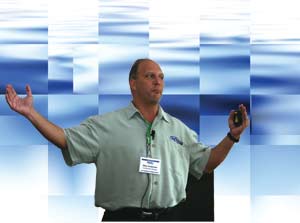
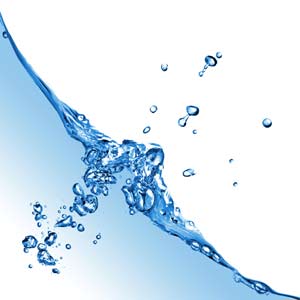 More information:
More information:










